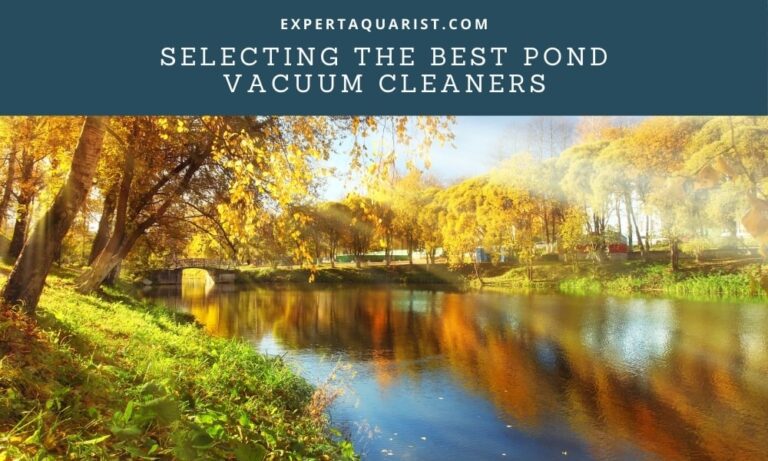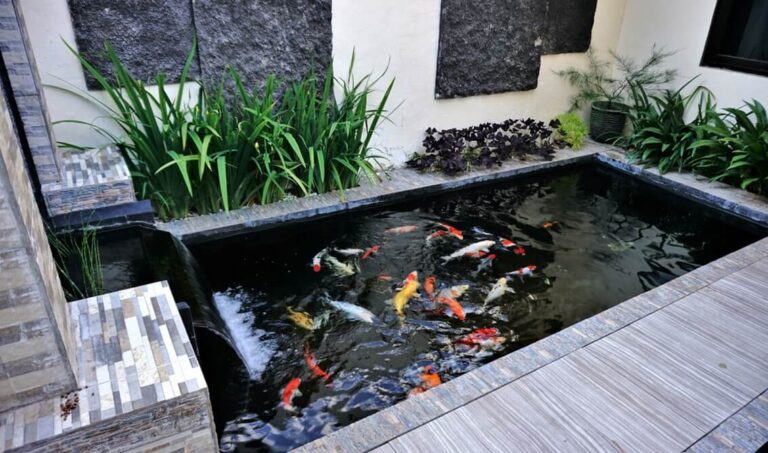A lot of work goes into building a pond in a backyard. Then there is the hassle of regular maintenance. After all these troubles, pond owners want their ponds to be clean and healthy for the organisms living in them. But then they have to deal with sludge.
Sludges are formed from various debris that falls onto and created into the pond. Not only are they a nuisance to take care of but they also pollute the pond environment greatly. It is mandatory for those owning ponds to regularly get rid of them. From using pond vacuums to using your own two hands, there are a whole host of methods that can be used to remove sludge from a pond.
In the following article, I will show you how to remove sludge from the bottom of the pond and if possible, how to prevent it from forming altogether.
What is Sludge?
To solve any kind of problem, first, one has to understand the problem itself. You can’t remove sludge from your pond if you have no idea what it is in the first place.
When various waste materials accumulate at the bottom of the pond, these are collectively called sludge. They can be made up of many different things, mostly organic. If your pond has natural shade, which is very common, the leaves and dead branches of those trees fall into the water. If they are not cleaned up promptly, they sink to the bottom of the pond and start rotting. After decomposing to a certain degree, they become sludge.
Even the waste that the fish in the pond produce can become sludge as well. Fish waste drops to the bottom of the pond and becomes sludge.
How to remove pond sludge from the bottom: 5 Effective ways

Luckily, sludge removal isn’t a very hard task. There are a variety of methods that you can follow to get rid of the sludge in your pond.
1. Using Pond Vacuum
The best way to get rid of pond sludge is to use a pond vacuum. It is the quickest and easiest method for you to follow if you have had enough of sludge pollution.
Pond Vacuums suck up every bit of sludge from the bottom of the pond. This keeps the pond water clean and healthy. Vacuum your pond once in a few months, and you would not need to worry about sludge formation at all.
2. Scooping the sludge out
Not everyone will have the money or time available to buy a pond vacuum. Fret not, you still can deal with sludge by physically removing it.
Get a hold of a pond net that is very fine, and run it along the bottom of the pond to scoop out the sludge. Yes, it is more time consuming and will require a lot of manual labor, but it is better than nothing. This process will not ensure the complete eradication of sludge, but it will reduce the sludge.
3. Using a shovel
You can also use shovels that are designed to deal with sludge or sediment from the bottom of ponds. Yes, it will require some hard work, as all works with shovels do, but it is a very cost efficient alternative to a pond vacuum.
4. Using Beneficial Bacteria and Enzymes
Nowadays, pond owners are using muck reducer pills to get rid of the sludge in their ponds. These pills contain natural bacteria that are beneficial to the pond.
These bacteria not only break down the sludge in a natural way but they are also fish friendly.
There are also some enzymes available that can break sludge down too. These enzymes are also very friendly to the fish in the pond
5. Draining the entire pond
If you can not use any of the above methods, just drain the whole pond and scrub the sludge off manually. But draining the pond will mean that you must start over from nothing once all is said and done.
Next, when you are done cleaning, refill the pond. Sometimes the water may contain chlorine, so either wait a few days for the gas to go off or remove it instantly with a chlorine neutralizer.
Additional Read: Best Pond Sludge Removers
How does sludge pollute the pond ecosystem?
If you own a pond, it is more likely that you will have some amount of sludge in your pond. As long as the layer of sludge is thin, you don’t need to worry. It’s the thick sludge layers that are harmful to the ecosystem of the pond.
As I stated above, sludge is created from decomposed organic materials. So, when these organic matter are decomposed and broken down, they release gases like Hydrogen sulphide which are extremely toxic and harmful to living organisms. Aside from being toxic, they also reduce the level of dissolved oxygen in the pond water.
Oxygen is a must for every living creature. So, when oxygen levels go down, the fish in the pond become the biggest victim of the pollution. As they can not breathe air, they receive their required oxygen from the oxygen which is dissolved in the water. If the oxygen level is reduced, they start to have trouble breathing. If the sludge is not cleaned in time, all the fish in the pond will die.
So, how would you know if your pond has accumulated too much sludge? Simple, just follow your nose. If you think your pond has started to smell like rotten eggs, it is because of the Hydrogen Sulphide gas which is created due to the sludge accumulation.
How to prevent sludge in a pond?
As the proverb goes- prevention is indeed better than cure. Why wait for the sludge to form and create problems if you can nip the chance of it forming in the bud? Also, it is not always possible to buy a pond vacuum or do extensive manual labor to completely remove sludge from the pond bottom.
So, deal with it before it becomes a bigger problem. Here’s how you should do it:
Keeping an eye on the fish
Most ponds have fish in them. First ensure that you haven’t put too many fishes in with respect to the area of the pond.
After introducing the fish, keep the fish population under control. Various fish have a very high reproduction rate, which can make the pond overpopulated in a short amount of time. Too many fish will result in an overload of fish waste in your pond. This will only make the sludge situation worse.
Also, while feeding the fish, make sure that you don’t put too much food in the water. The excess food will drop down to the bottom and add to the sludge.
Floating pellets of fish food are the best choice as the uneaten food can later be scooped up before they become toxic.
Cleaning organic materials
It is inevitable that the leaves and branches of the surrounding trees will fall into the pond. You have to clean these out regularly in order to stop them from forming sludge. Use a net with a long handle to do this.
You can also put a net over the pond which will catch most of the leaves.
Installing aeration system
Aeration systems make sure that the oxygen level in the water is adequate for the fish to live healthily. So install a pond spitter, fountain or waterfall which will result in the increase of the aerobic bacteria population. These bacteria break down the organic materials and prevent sludge from forming.
Installing pond filter
Filters, well, filter out the waste materials from the pond. So the chances of sludge from forming goes down drastically if a filter is installed.
Introducing Beneficial Bacteria
It is better to install a filter and fountain and introduce beneficial bacteria to the pond to make sure the chance of sludge formation remains minimum.
Can sludge be useful?
It’s not all doom and gloom if there is a presence of sludge in a pond. Notice that I have said sludge is harmful for plants and animals in the pond. But for terrestrial plants, sludge can actually be a good thing.
The nitrogenous waste that they produce is a great source of nutrition for plants growing on the soil around the pond. After cleaning the sludge, you can apply these as fertilizers onto the garden plants. Your plants will thrive and you will be saved from spending extra money on fertilizers.
Keep your pond healthy
It sucks to see all your hard work go in vain because of some avoidable reasons. Now that you have learnt how to remove sludge from the bottom of the pond, make sure these sludge don’t pour water on all the work you had done to create a beautiful and healthy pond.
Clean the pond regularly or prevent it from forming altogether, just make sure the sludge doesn’t become a recurring problem for your pond.






